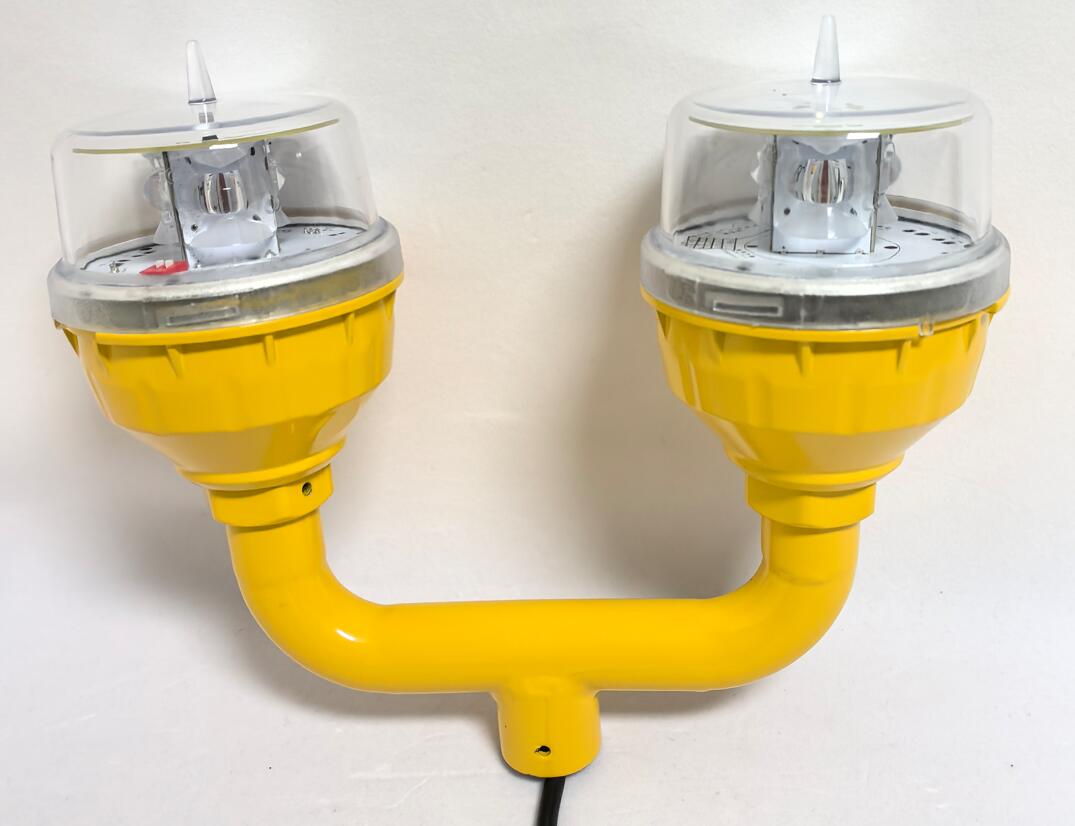Double Obstruction Light: The Dual-System Solution for Enhanced Aviation Safety
In the complex world of aviation safety lighting, double obstruction light systems have emerged as a sophisticated solution for marking tall structures. These dual-light configurations combine different lighting technologies to provide optimal visibility across various flight conditions. This article explores the unique advantages, technical specifications, and regulatory considerations that make double obstruction light systems an increasingly popular choice for modern infrastructure.
Understanding Double Obstruction Light Systems
Core Concept and Purpose
Double obstruction light configurations typically feature:
A combination of red and white lighting elements

Both steady-burning and flashing light patterns
Different intensity levels for day/night operations
These systems serve two primary functions:
| double obstruction light |
Providing continuous low-level visibility (red lights)
Delivering high-intensity warnings (white strobes) when needed
Technical Specifications
Modern double obstruction light units incorporate:
LED technology for both light types
Automatic intensity adjustment
Synchronized flash patterns
360-degree horizontal coverage
| double obstruction lights |
Key Applications and Benefits
Primary Use Cases
Double obstruction light systems are particularly valuable for:
Tall communication towers (150-500 feet)
Wind turbine installations
High-rise buildings in urban areas
Offshore oil platforms
Bridge support structures
Operational Advantages
Enhanced Visibility Range: The combination of red and white lights ensures detection from greater distances
Adaptive Performance: Automatic adjustment to ambient light conditions
Regulatory Compliance: Meets multiple aviation authority requirements simultaneously
Energy Efficiency: Smart systems only activate high-intensity lighting when needed
Regulatory Compliance Framework
International Standards
Double obstruction light systems must comply with:
FAA AC 70/7460-1L (US)
ICAO Annex 14 (global)
EASA CS-ADR-DSN (Europe)
Specific Requirements
Defined chromaticity coordinates for both light colors
Minimum intensity levels for each component
Proper synchronization between light elements
Correct vertical spacing when installed in arrays
Installation Considerations
Optimal Placement Strategies
Top-most accessible point on structure
Clear of any architectural obstructions
Proper angular alignment for maximum coverage
Consideration of nearby structures' lighting
Mounting Solutions
Dedicated dual-light fixture mounts
Separate but coordinated installations
Vibration-resistant hardware for tall structures
Power and Control Systems
Unified power supply options
Backup power provisions
Smart control units for automatic operation
Technological Advancements
Modern Innovations
Recent developments in double obstruction light technology include:
Integrated LED arrays with dual-color capability
Wireless monitoring and control
Advanced photocell systems for precise activation
Self-diagnosing circuitry for maintenance alerts
Sustainability Features
Solar-hybrid power options
Energy-efficient operation modes
Reduced light pollution designs
Maintenance Best Practices
Routine Inspection Protocol
Monthly visual checks
Quarterly performance verification
Annual comprehensive testing
Key Maintenance Tasks
Lens cleaning and inspection
Electrical connection checks
Photocell sensitivity testing
Structural integrity verification
Comparative Advantages
Versus Single-Light Systems
Broader compliance with regulations
Better performance in variable conditions
More reliable warning capability
Versus Higher-Intensity Systems
Lower energy consumption
Reduced light pollution
Less disruptive to surrounding areas
Future Developments
Emerging Technologies
AI-powered adaptive lighting
Integrated radar augmentation
Advanced materials for extreme environments
Regulatory Evolution
Potential updates to dual-light standards
New synchronization requirements
Enhanced environmental considerations
Double obstruction light systems represent a significant advancement in aviation safety technology, offering superior performance through their dual-light approach. As structures continue to grow taller and airspace becomes more crowded, these systems provide an optimal balance between visibility and efficiency.
The future of double obstruction light technology points toward smarter, more integrated solutions that will further enhance aviation safety while addressing environmental concerns. By implementing and maintaining these systems according to best practices, structure owners can ensure compliance while contributing to safer skies for all airspace users.
